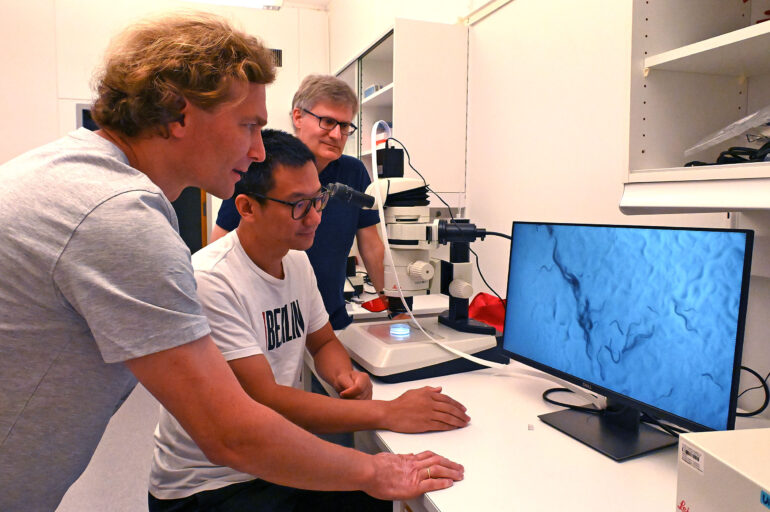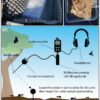“You’re not dead till you’re warm and dead.”
This saying reflects clinical observations, including those by doctors at the University hospital in Tromsø in Northern Norway, who have treated patients surviving several hours without a heartbeat, provided they were also very cold.
In 1999, 29-year-old Anna Bågenholm survived a body temperature of 13.7 degrees Celsius (56.7 degrees Fahrenheit), after a skiing accident sent her under ice in a river. Her heart did not beat for several hours. The story was later relayed by the BBC.
Now, a group of researchers in Oslo have come closer to explaining what happens in cells that experience deep cooling.
Their work is relevant for both hibernation and accidental hypothermia. It has ramifications for treating trauma patients in hospitals, neurodegenerative diseases like Alzheimer’s and Parkinson’s and, in the future, might help humans travel in space.
“This project began quite a few years ago as an ambitious masters’ project, where the student wanted to work on something cool. Obliging, we began studying proteins involved in cold responses,” says Rafal Ciosk, professor in the Section for Biochemistry and Molecular Biology at the Department of Biosciences, University of Oslo.
“We started looking at them in our favorite model organism, the nematode Caenorhabditis elegans,” he says.
Better known as C. elegans, the tiny worm—just around 1 millimeter long—is widely used in biological research. It has won its “exploiters” three Nobel prizes.
Hibernating worms prolong their lifespan
Through their research, Ciosk and his colleagues realized how little is known about organismal responses to cold.
They saw that if they cool the C. elegans in a particular way, they will survive for a very long time without affecting the total lifespan.
The researchers kept the worms at 4 degrees Celsius (39.2 degrees Fahrenheit) for a week, then took them out from the cold and measured their lifespan. Remarkably, the total life span was a week longer than that of animals cultivated in the normal temperature.
“It looked like they were hibernating, and this is something that has not been described for this organism before,” Ciosk says, and continues
“We started looking at what happens in this organism and, while doing genetics on this model, we realized that there are certain manipulations we can do that make the survival of these animals in the cold even more effective.”
An iron storing protein is the key
By following one particular manipulation, they realized that increasing the levels of a particular protein calledferritin, a protein that stores iron, strongly protected from cold.
Iron is an essential element for us, however free iron can be toxic. Ferritins make huge nano cages that can accommodate thousands of iron atoms, thus making it possible to store and transport iron in a safe and non-toxic way.
Ciosk explains they also tested whether this may be relevant for the mammalian cells. They chose neurons, nerve cells in the brain and nervous system, which are very sensitive cells.
“We found that when we induced ferritin in these cells, and exposed them to cold, the ferritin had protective effects,” he says.
The researchers also found that mimicking the effect of ferritin with drugs also had beneficial effects for the neurons.
“We were able to show that we can use a very simple model system and identify cold-protective pathways that are conserved in mammalian cells. This could open new ways to treat hypothermia and potentially neurodegenerative conditions,” Ciosk says.
Hibernating our way through space?
You might think the tiny C. elegans worm has very little in common with humans.
“The physiology IS very different, but at the basic cellular level, many processes are conserved. The way the cell works is very similar across species,” Ciosk explains.
Hibernation is rare among primates, but there are examples of hibernating lemurs in Madagascar.
“In C. elegans and the neuron cells, we overexpressed ferritin and then showed that it has benefits. But, apparently, ferritin is expressed naturally in those hibernating primates. Possibly this is the way they survive the cold in nature,” Ciosk says.
Humans do not hibernate, but a hibernation-like sleep is suggested to facilitate long-distance space travel some time in the future.
Cooling trauma patients to 10 degrees
An application that is much nearer in time is cooling of patients in hospitals.
Ciosk explains that cooling is used in several ways clinically. With moderate cooling, the patient’s body temperature is lowered to 32–33 degrees Celsius (~90 Fahrenheit). In deep cooling, however, the body temperature will be lowered to approximately 10 degrees Celsius (50 Fahrenheit).
“This is in the range of hibernating animals,” he says.
There are clinical trials exploring deep cooling at a hospital in the U.S..
Relevant for diseases like Alzheimer’s and Parkinson’s
The research conducted by the group in Oslo is also relevant for neurodegenerative diseases like Alzheimer’s and Parkinson’s.
“In the neurons we are experimenting on, we are looking at cold-related degeneration. A couple of years ago, a study showed that certain cold-induced proteins have protective effects against various neurodegenerative diseases,” Ciosk says.
“So, if you find how hibernators protect their neurons in the cold you may also find pathways that are relevant for patients,” he explains.
The next step for the researchers in Oslo is to take what they have found in C. elegans and cultured neurons and move it to an in vivo mammalian model.
The research was published in Nature Communications.
More information:
Tina Pekec et al, Ferritin-mediated iron detoxification promotes hypothermia survival in Caenorhabditis elegans and murine neurons, Nature Communications (2022). DOI: 10.1038/s41467-022-32500-z
Provided by
University of Oslo
Citation:
The tiny worm that can help treat trauma patients and facilitate long-distance human space travel (2022, October 14)



